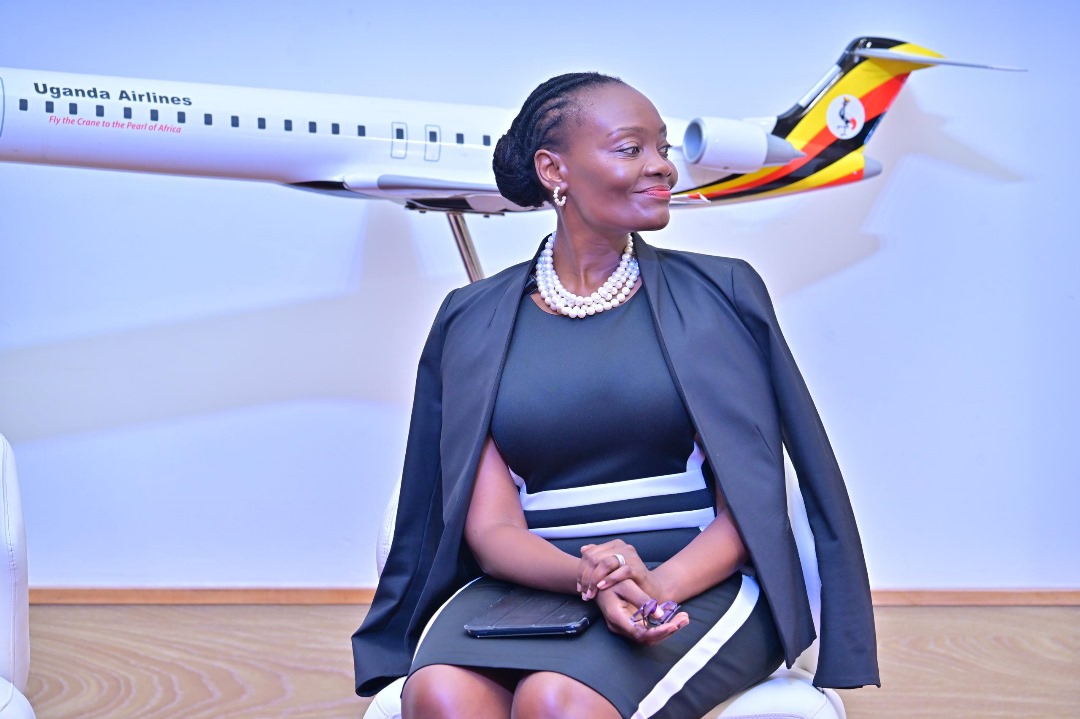At Entebbe International Airport, one of Uganda Airlines’ shiny Bombardier CRJ900 jets, painted in the bold red, black, and yellow of the national flag, stands as a symbol of national pride. But behind the polished image of the revived carrier lies a reality of mounting losses, operational challenges, and questions over whether politics, rather than business sense, is controlling the airline’s future.
The airline was revived in 2019 after almost two decades of dormancy. The Ugandan government signed a deal with Canadian company Bombardier in 2018 to acquire four CRJ900 aircraft at $27.3 million each. The 76-seater planes, with 12 business class seats, were meant for regional routes. This marked the start of Uganda Airlines’ new chapter.
The fleet soon expanded to include two Airbus A330-800neos for long-haul flights to Dubai, Mumbai, and London, and more recently, an Airbus A320-200 leased from a Lithuanian carrier. Today, the airline flies to 17 destinations across Africa, the Middle East, Asia, and Europe. On paper, this looks like a major comeback. In practice, however, the expansion has been very costly.
The Auditor General’s 2023/24 report revealed that Uganda Airlines lost Shs 237 billion in one year. Ticket fraud alone drained Shs 140 billion, while another Shs 170 billion was lost through ticket price manipulation involving staff and travel agents. CEO Jennifer Bamuturaki, speaking before Parliament’s watchdog committee last week, admitted that fuel, staff allowances, and aircraft depreciation continue to eat into revenue.
Maintenance costs are also a huge burden, consuming nearly 20 percent of the airline’s budget. Uganda Airlines recently gained clearance to perform basic repairs at Entebbe, but major servicing still has to be done overseas at certified facilities, an expensive process. Experts argue that building a maintenance hangar locally — at a cost of about $50 million (Shs 183 billion) — could save billions in the long run.
Complicating matters further is the fate of the CRJ program. Bombardier sold the line to Mitsubishi Heavy Industries in 2019, and production has since stopped. With no new CRJ900s being manufactured, spare parts are increasingly difficult to source and more expensive. “Once production stops, spare parts become scarce and costly, or you’re forced to settle for used components,” said Medard Sseggona, chair of the parliamentary committee investigating the matter.
Veteran aviation expert Captain Edward Francis Babu has been one of the airline’s toughest critics. He argues that Uganda Airlines was built on politics, not business. “When you’re starting any business, including an airline, it must be founded on a business case, not politics. Unfortunately, Uganda Airlines was never allowed to mature,” he said.
He pointed out that Uganda’s geographical location makes Entebbe an ideal hub between Africa, the Middle East, and Asia. But instead of focusing on key regional routes like Nairobi, Juba, and Mogadishu to build a solid base, the airline rushed into intercontinental routes that carried higher risks. “They should have started small with routes that guarantee traffic. Instead, they went for show,” Babu remarked.
Babu also faulted the decision to buy planes outright instead of leasing, which most new airlines prefer as it lowers risk and allows flexibility. “I told them: don’t buy, lease aircraft. After a few years, change models based on route performance. They didn’t listen,” he said. He further criticized the choice of CRJs, since few regional carriers operate them, making it harder and costlier to share maintenance facilities.
Running an airline, he warned, is an expensive venture. “The break-even point for an airline is far off — five to seven years. The internal rate of return in this region is below 10 percent. If you hit 10 percent, you celebrate,” he explained. But that requires discipline, strategy, and strict cost control, qualities critics say Uganda Airlines has lacked due to overstaffing, political appointments, and bureaucracy.
“You don’t need boards and relatives running the show. You need professionals, people who know how to build airlines. Look at Emirates, it started with experts, not politicians,” Babu added.
Still, he believes the airline is not beyond saving. “We don’t need another restart. We need leadership that knows what it’s doing. Less politics, more professionalism — that’s how you turn this airline around.”
For now, Uganda Airlines remains both a symbol of national pride and a source of financial pain. Each take-off from Entebbe tells a story of ambition, but also of costly decisions.
